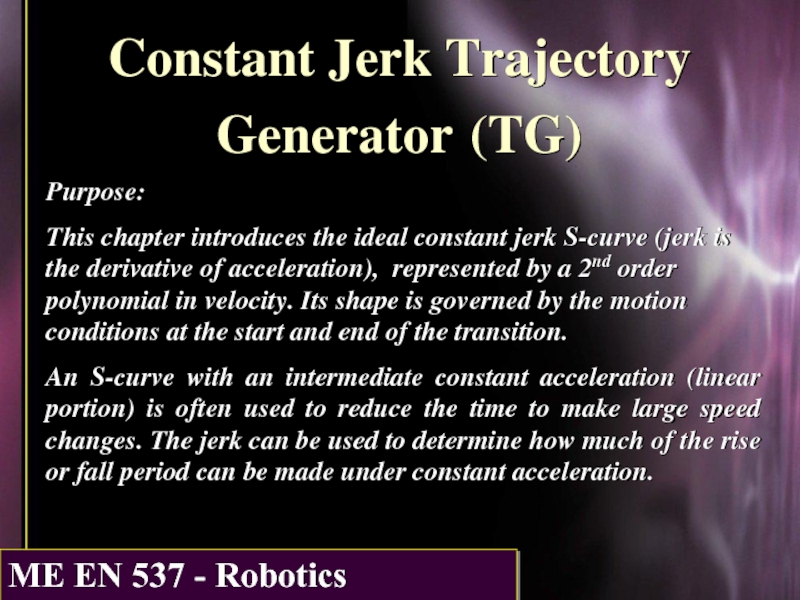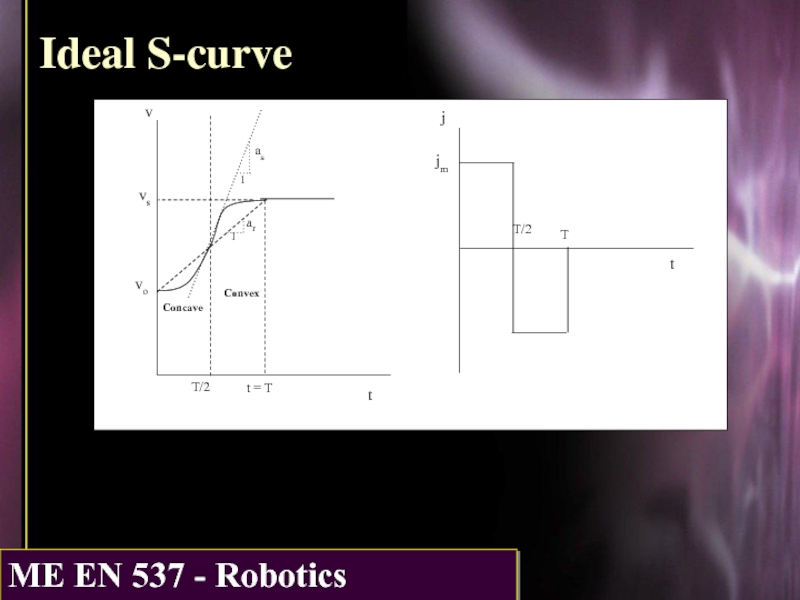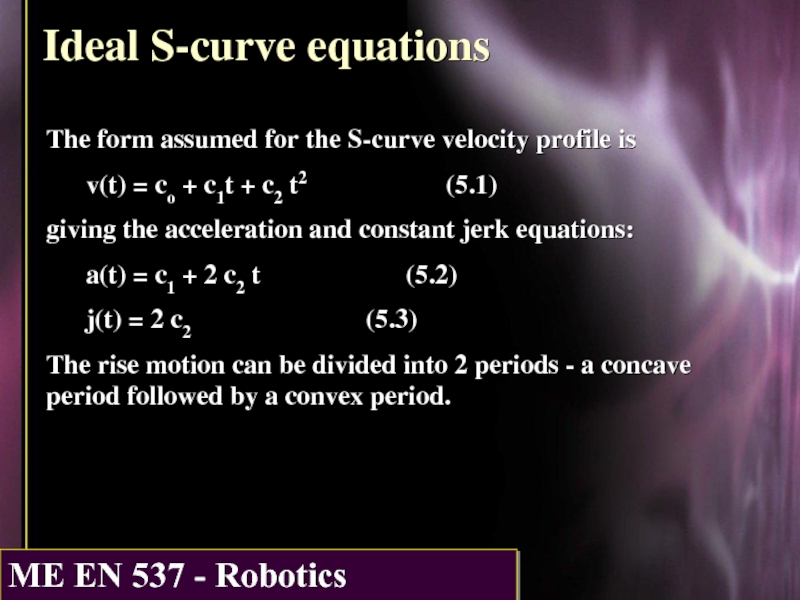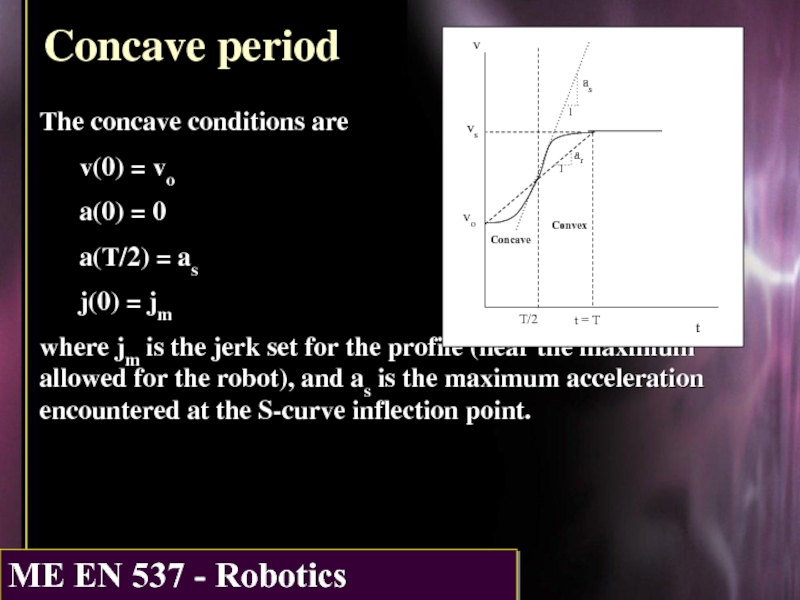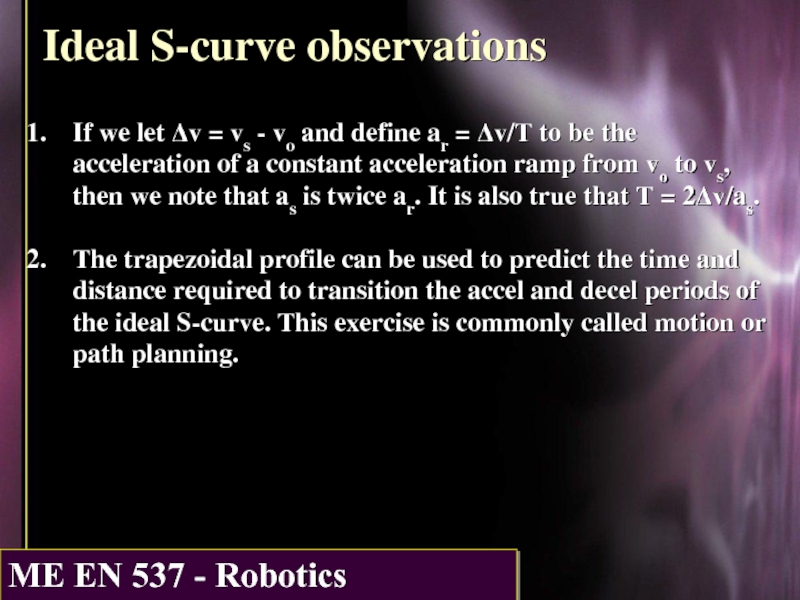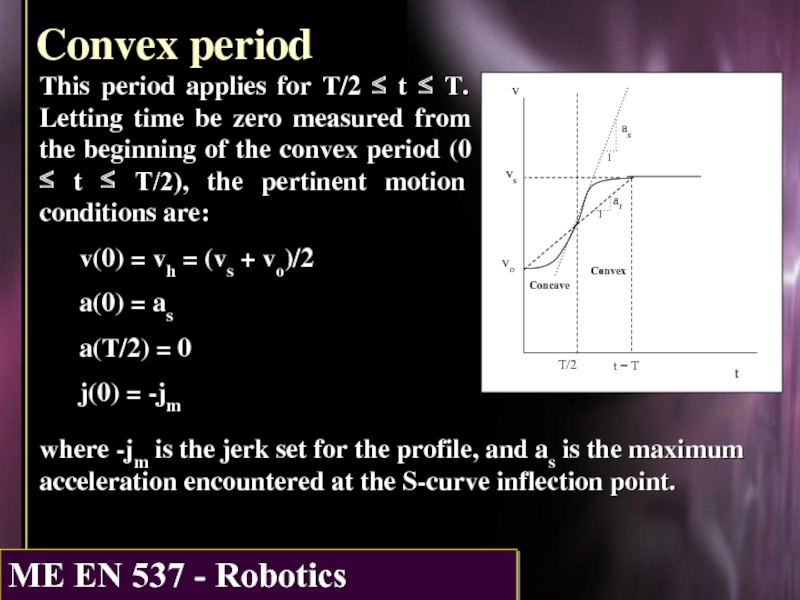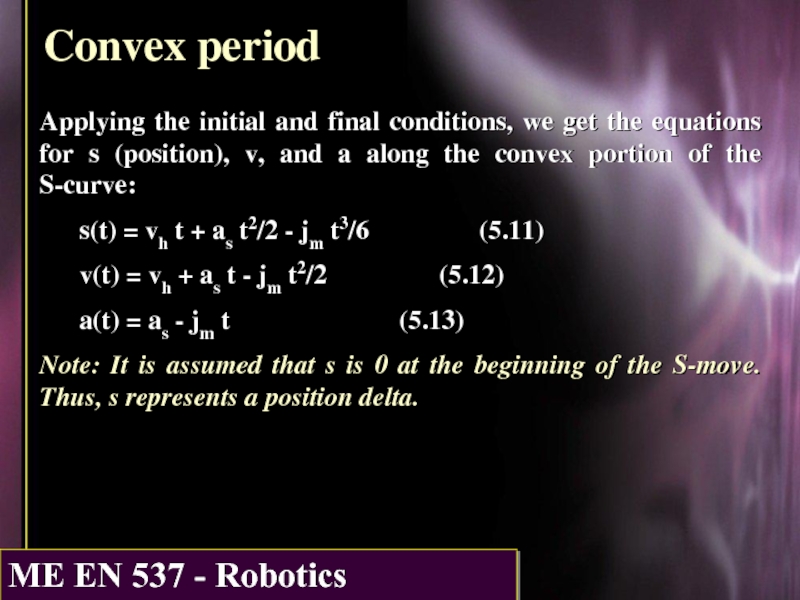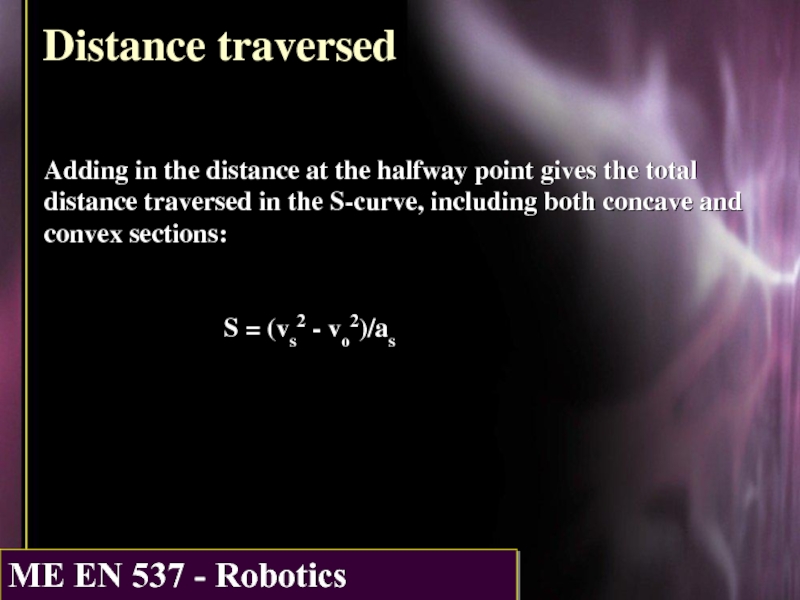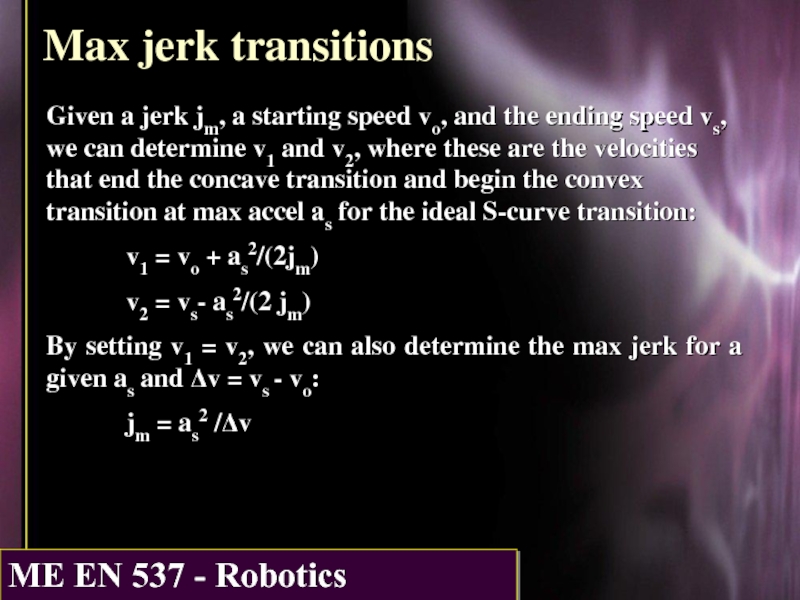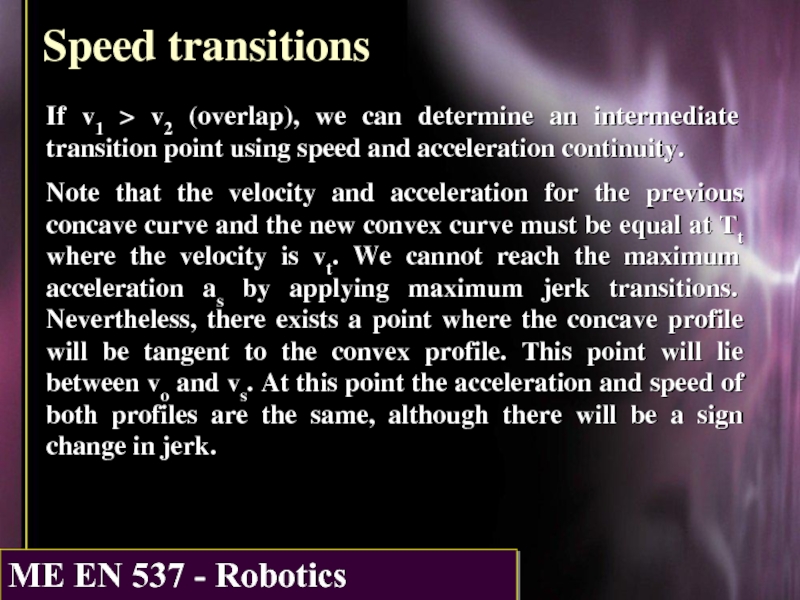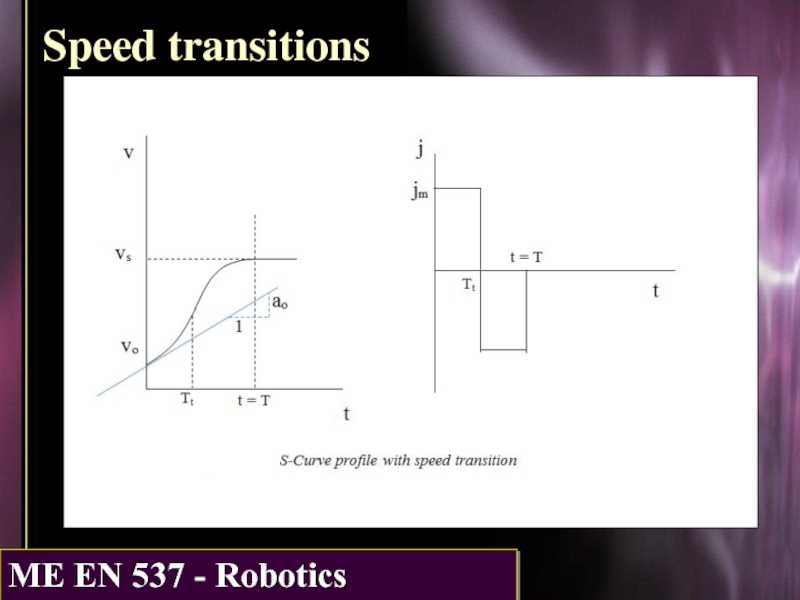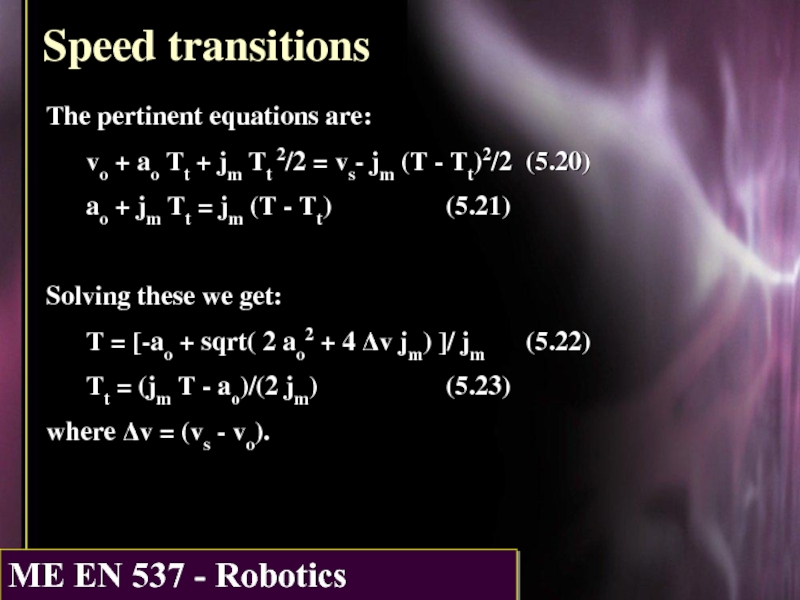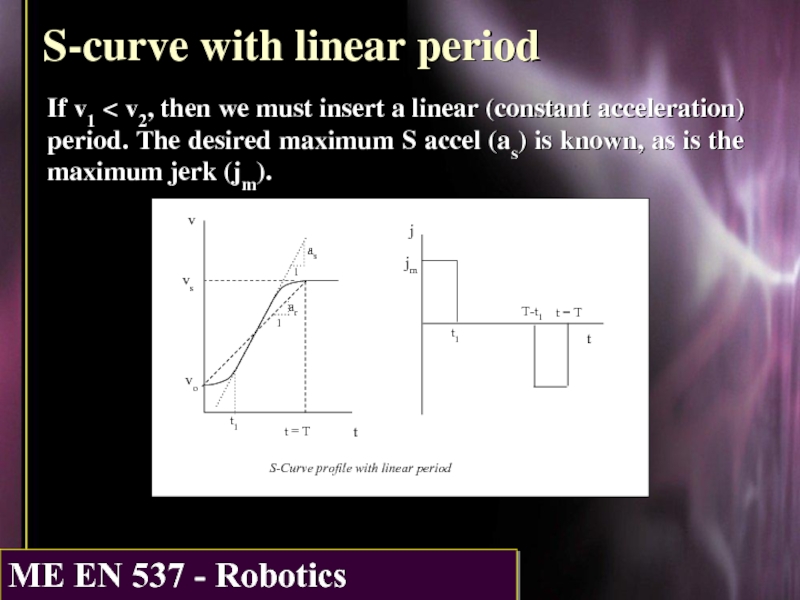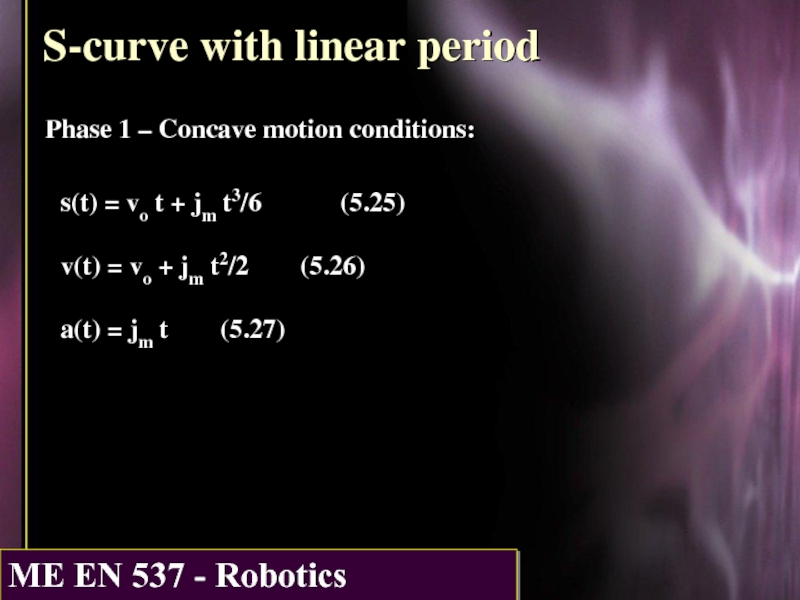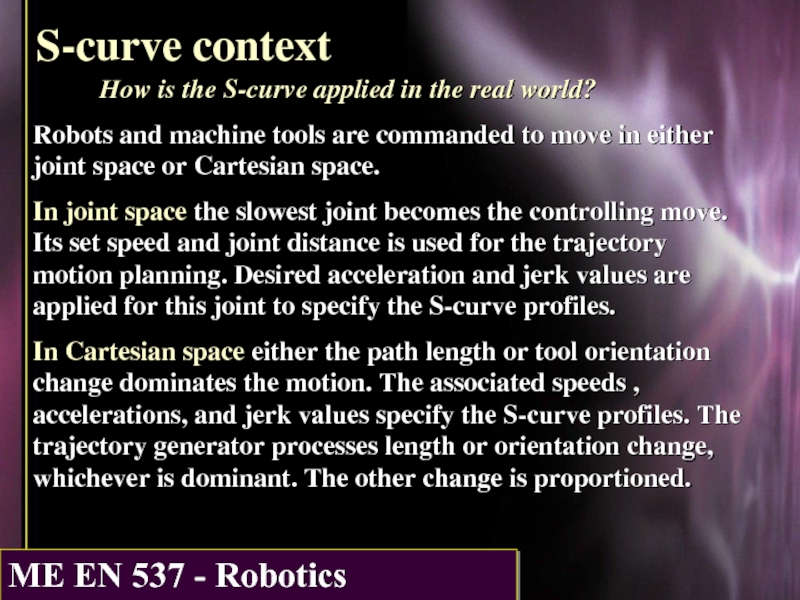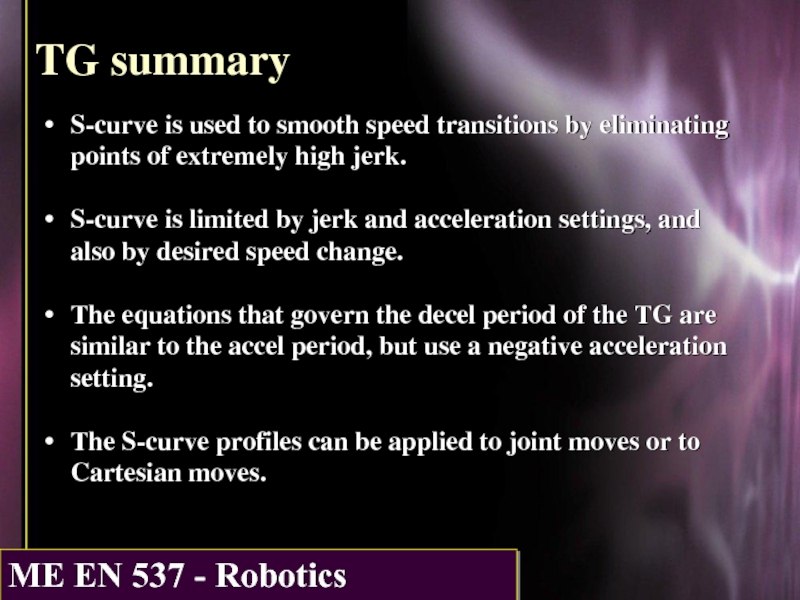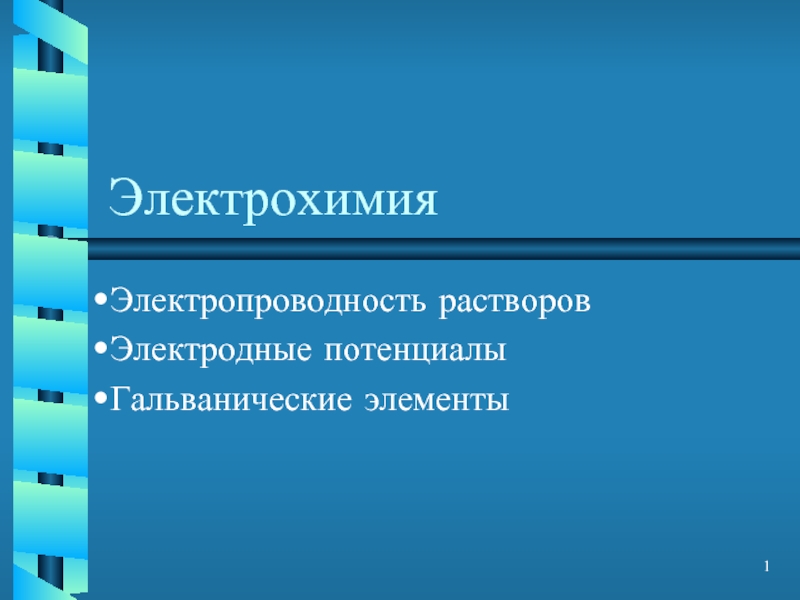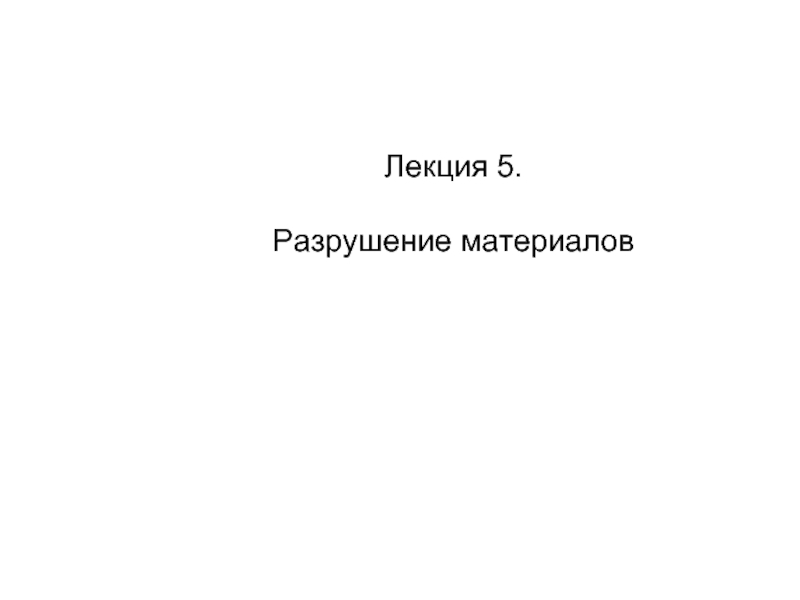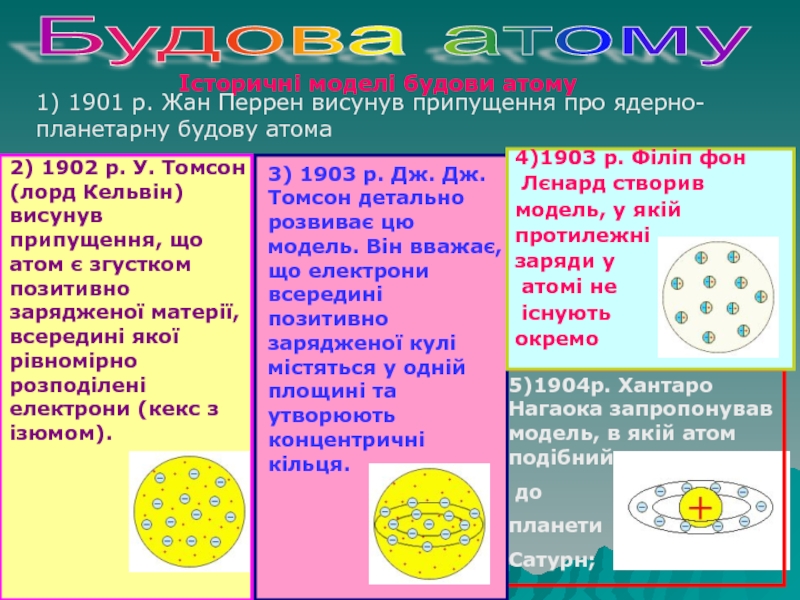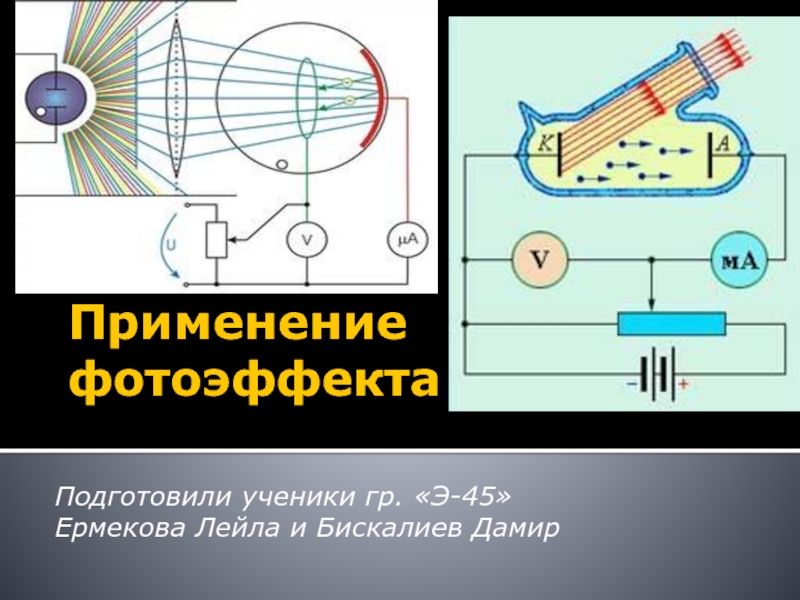- Главная
- Разное
- Дизайн
- Бизнес и предпринимательство
- Аналитика
- Образование
- Развлечения
- Красота и здоровье
- Финансы
- Государство
- Путешествия
- Спорт
- Недвижимость
- Армия
- Графика
- Культурология
- Еда и кулинария
- Лингвистика
- Английский язык
- Астрономия
- Алгебра
- Биология
- География
- Детские презентации
- Информатика
- История
- Литература
- Маркетинг
- Математика
- Медицина
- Менеджмент
- Музыка
- МХК
- Немецкий язык
- ОБЖ
- Обществознание
- Окружающий мир
- Педагогика
- Русский язык
- Технология
- Физика
- Философия
- Химия
- Шаблоны, картинки для презентаций
- Экология
- Экономика
- Юриспруденция
Constant Jerk Trajectory Generator презентация
Содержание
- 1. Constant Jerk Trajectory Generator
- 2. In particular, you will Determine
- 3. Why S-curves? Reviewing the trapezoidal
- 4. Ideal S-curve t t
- 5. Ideal S-curve equations The form assumed
- 6. Concave period The concave conditions are v(0)
- 7. Concave period Applying the initial and final
- 8. Ideal S-curve observations If we let
- 9. Convex period This period applies for T/2
- 10. Convex period Applying the initial and final
- 11. Distance traversed Adding in the distance
- 12. Max jerk transitions An ideal S-curve
- 13. Max jerk transitions Given a jerk
- 14. Speed transitions If v1 > v2
- 15. Speed transitions
- 16. Speed transitions The pertinent equations are:
- 17. S-curve with linear period If v1 <
- 18. S-curve with linear period Motion conditions: Phase
- 19. S-curve with linear period Phase 1 –
- 20. S-curve with linear period Phase 2 –
- 21. S-curve with linear period Phase 3 –
- 22. S-curve context
- 23. TG summary S-curve is used to
Слайд 1Constant Jerk Trajectory Generator (TG)
Purpose:
This chapter introduces the ideal constant jerk
An S-curve with an intermediate constant acceleration (linear portion) is often used to reduce the time to make large speed changes. The jerk can be used to determine how much of the rise or fall period can be made under constant acceleration.
Слайд 2In particular, you will
Determine why S-curves are necessary
Review the ideal
Consider constant acceleration jerk transitions.
Consider the speed transition when the velocity change is too small to reach the desired accel (or decel) value.
Consider the trajectory generator in the context of joint moves or curvilinear moves.
Слайд 3
Why S-curves?
Reviewing the trapezoidal trajectory profile in speed v, we
An S-curve is a way to impose a limited jerk on the speed transitions, thus smoothing out the robot’s (or machine tool) motion.
v
t
1
3
2
4
The trapezoidal profile to the right was the trajectory generator of choice for many years, but is now being replaced by S-curve profiles. Why?
Area under curve is move distance
Слайд 5Ideal S-curve equations
The form assumed for the S-curve velocity profile
v(t) = co + c1t + c2 t2 (5.1)
giving the acceleration and constant jerk equations:
a(t) = c1 + 2 c2 t (5.2)
j(t) = 2 c2 (5.3)
The rise motion can be divided into 2 periods - a concave period followed by a convex period.
Слайд 6Concave period
The concave conditions are
v(0) = vo
a(0) = 0
a(T/2) = as
j(0)
where jm is the jerk set for the profile (near the maximum allowed for the robot), and as is the maximum acceleration encountered at the S-curve inflection point.
Слайд 7Concave period
Applying the initial and final conditions, we get the equations
s(t) = vo t + jm t3/6 (5.7)
v(t) = vo + jm t2/2 (5.8)
a(t) = jm t (5.9)
Note: It is assumed that s is 0 at the beginning of the S-move. Thus, s represents a position delta.
Слайд 8Ideal S-curve observations
If we let Δv = vs - vo
The trapezoidal profile can be used to predict the time and distance required to transition the accel and decel periods of the ideal S-curve. This exercise is commonly called motion or path planning.
Слайд 9Convex period
This period applies for T/2 ≤ t ≤ T. Letting
v(0) = vh = (vs + vo)/2
a(0) = as
a(T/2) = 0
j(0) = -jm
where -jm is the jerk set for the profile, and as is the maximum acceleration encountered at the S-curve inflection point.
Слайд 10Convex period
Applying the initial and final conditions, we get the equations
s(t) = vh t + as t2/2 - jm t3/6 (5.11)
v(t) = vh + as t - jm t2/2 (5.12)
a(t) = as - jm t (5.13)
Note: It is assumed that s is 0 at the beginning of the S-move. Thus, s represents a position delta.
Слайд 11Distance traversed
Adding in the distance at the halfway point gives
S = (vs2 - vo2)/as
Слайд 12Max jerk transitions
An ideal S-curve cannot transition smoothly between any
Why?
Слайд 13Max jerk transitions
Given a jerk jm, a starting speed vo,
v1 = vo + as2/(2jm)
v2 = vs- as2/(2 jm)
By setting v1 = v2, we can also determine the max jerk for a given as and Δv = vs - vo:
jm = as2 /Δv
Слайд 14Speed transitions
If v1 > v2 (overlap), we can determine an
Note that the velocity and acceleration for the previous concave curve and the new convex curve must be equal at Tt where the velocity is vt. We cannot reach the maximum acceleration as by applying maximum jerk transitions. Nevertheless, there exists a point where the concave profile will be tangent to the convex profile. This point will lie between vo and vs. At this point the acceleration and speed of both profiles are the same, although there will be a sign change in jerk.
Слайд 16Speed transitions
The pertinent equations are:
vo + ao Tt + jm
ao + jm Tt = jm (T - Tt) (5.21)
Solving these we get:
T = [-ao + sqrt( 2 ao2 + 4 Δv jm) ]/ jm (5.22)
Tt = (jm T - ao)/(2 jm) (5.23)
where Δv = (vs - vo).
Слайд 17S-curve with linear period
If v1 < v2, then we must insert
Слайд 18S-curve with linear period
Motion conditions:
Phase 1 - Concave Phase 2
0 ≤ t ≤ t1 0 ≤ t ≤ T -2t1 0 ≤ t ≤ t1 _________________________________________________________________________________________________________________
v(0) = vo
a(0) = 0
a(t1) = as
j(0) = jm
v(t1) = v1
v(0) = v1
a(0) = as
a(T-2t1) = as
v(T-2t1) = v2
v(0) = v2
a(0) = as
v(t1) = vs
a(t1) = 0
j(0) = - jm
Слайд 19S-curve with linear period
Phase 1 – Concave motion conditions:
s(t) = vo
v(t) = vo + jm t2/2 (5.26)
a(t) = jm t (5.27)
Слайд 20S-curve with linear period
Phase 2 – Linear motion conditions:
s(t) = v1
v(t) = v1 + as t (5.31)
Слайд 21S-curve with linear period
Phase 3 – Convex motion conditions:
s(t) = v2
v(t) = v2 + as t - jm t2/2 (5.36)
a(t) = as - jm t (5.37)
Слайд 22S-curve context
How is the S-curve applied
Robots and machine tools are commanded to move in either joint space or Cartesian space.
In joint space the slowest joint becomes the controlling move. Its set speed and joint distance is used for the trajectory motion planning. Desired acceleration and jerk values are applied for this joint to specify the S-curve profiles.
In Cartesian space either the path length or tool orientation change dominates the motion. The associated speeds , accelerations, and jerk values specify the S-curve profiles. The trajectory generator processes length or orientation change, whichever is dominant. The other change is proportioned.
Слайд 23
TG summary
S-curve is used to smooth speed transitions by eliminating points
S-curve is limited by jerk and acceleration settings, and also by desired speed change.
The equations that govern the decel period of the TG are similar to the accel period, but use a negative acceleration setting.
The S-curve profiles can be applied to joint moves or to Cartesian moves.
